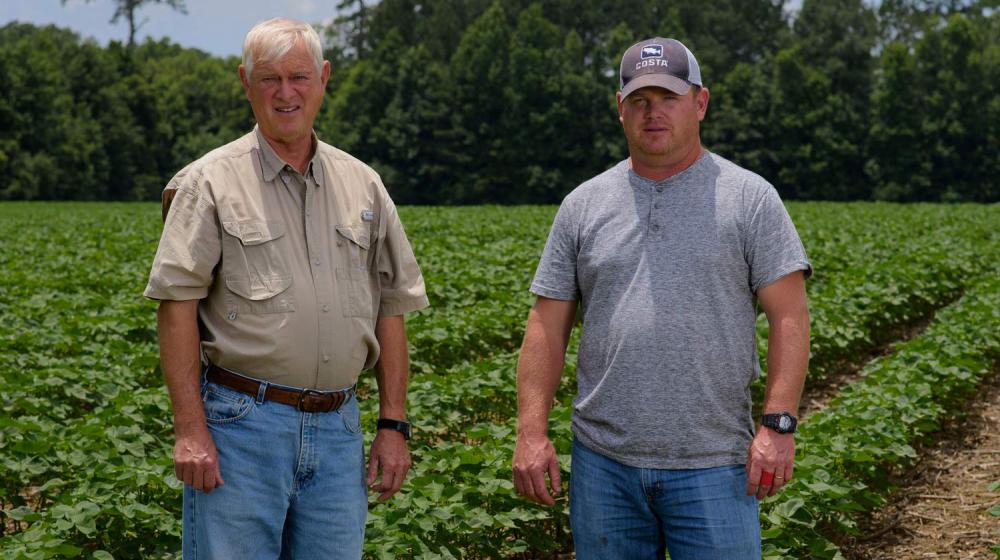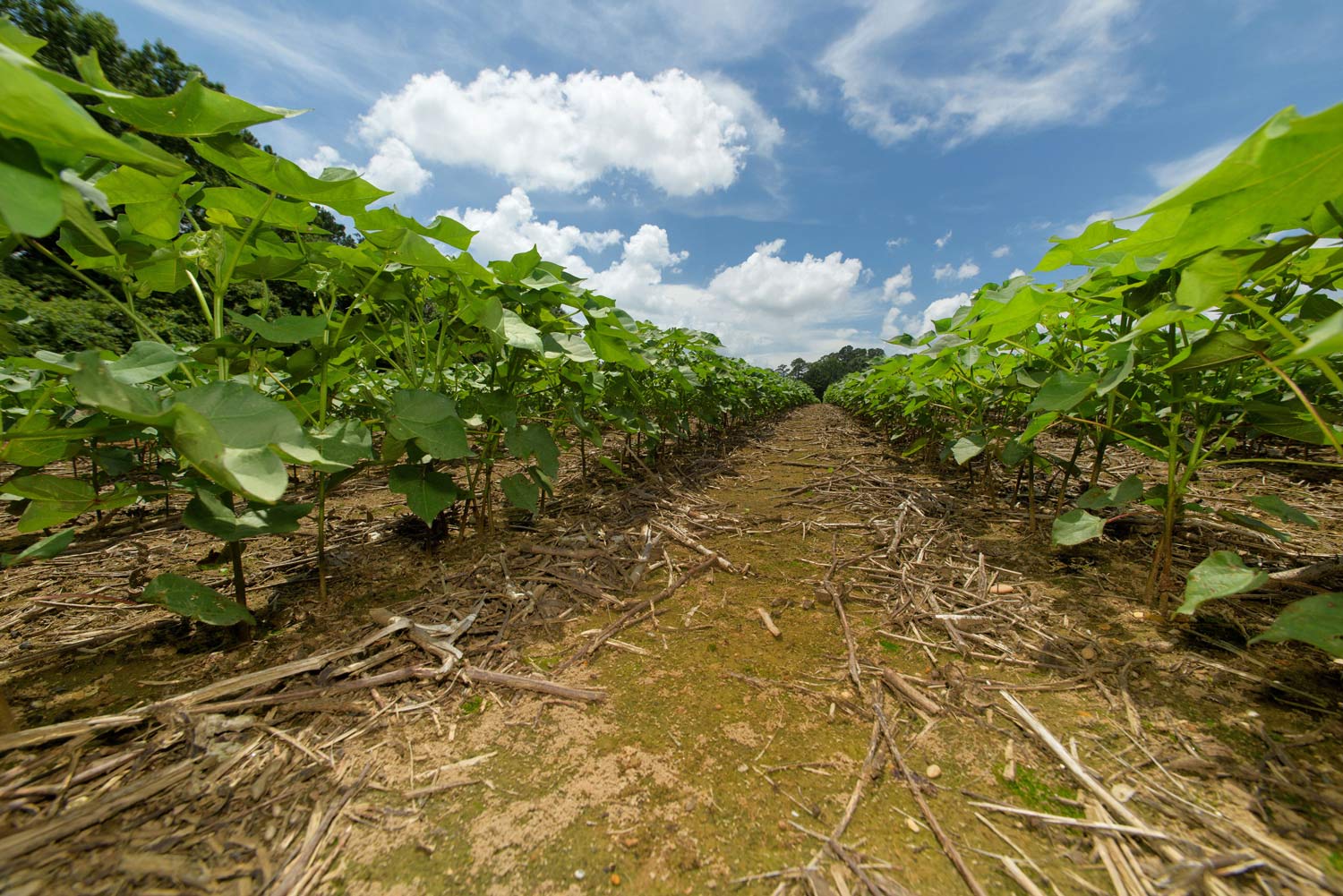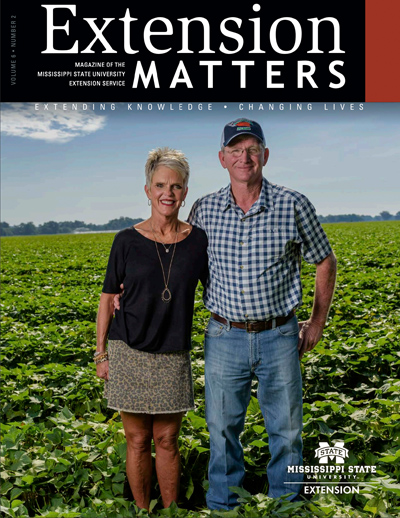Forging Ahead

Tommy and Kerry Moody help Extension with variety trials.
Variety trials exemplify Extension’s service to growers through pandemic
Story by Nathan Gregory • Photos by Kevin Hudson
For 10 years, a small portion of Moody Farms in Tishomingo County has been sectioned off for cotton variety trial plots. That streak continued in 2020, despite the COVID-19 pandemic.
Mississippi State University Extension Service faculty and staff plant variety trials at around 40 farms across the state each year to evaluate how different types of cotton perform in various conditions and soils. They share the results with growers to help them choose the best varieties for their locations and determine the most effective management strategies. This procedure is replicated for other row crops, including soybeans, rice, and corn.
"Without Extension, I feel like we would be 2 or 3 years behind the latest and best options that are available."
— TOMMY MOODY
Kerry Moody, who recently retired from a career in education, took over daily operations of the family farm from his father, Tommy Moody, in 2019.
He began growing soybeans and corn in 1977 after he bought his uncle’s farming business and equipment. In 1990, he slowly brought cotton into the fold. That crop became more prominent on the farm as years went by, until it “became a way of life,” as the younger Moody explains. Today, the farm is exclusively cotton.
“The MSU Extension Service has played a vital role in the success of our operation,” Kerry Moody says. “We have benefited from the research and technology Extension has shared with all farmers. From testing the Roundup Ready varieties we began using in the early ’90s to the triple-stacked gene that we have today, data from trial plots has evolved the agricultural practice. Without Extension, I feel like we would be 2 or 3 years behind the latest and best options that are available.”
In May, after the mandatory statewide shelter-in-place order was phased out, Extension agents Dr. Charlie Stokes and Zach Yow planted the 2020 plot on the Moody farm.
Video by Michaela Parker
“The day we planted, about the only thing a little different was practicing social distancing. It was pretty much business as usual, and we got everything done in a timely manner. People were being careful, but everybody was comfortable,” Stokes said. “Farmers need data this year and next year just like they did in previous years, if not more. Anything that will give them a few more pounds per acre to offset market fluctuation is beneficial.”
“Public health crises do not excuse growers from doing their jobs,” Yow adds. “In fact, these times make having information that can be used to improve yields even more critical.”

The Moodys approached Stokes several years ago when the seed treatments they were using had become less effective in protecting against thrips during the emergence stage of cotton. MSU Extension entomologist Dr. Angus Catchot was brought in to develop a custom treatment strategy.
“For years, we mixed our own formulation in a seed mixer to protect against thrips and to protect our root systems. We wanted to try an in-furrow application of acephate,” Kerry Moody explains. “Angus helped us formulate the rate at which it was applied. He was readily available to answer our questions and help us. Since then, we began an over-the-top automatic treatment for thrips, but, since we worked with Angus, we’ve been able to wait until emergence to treat our cotton.”
Kerry Moody says he relies on the latest trial plot data when it’s time to plant the next crop. One recent example was seeing firsthand which varieties had the best nematode resistance.
“That was noticeable in the plot on the day of harvest, and we took that information into the next year. We planted some fields that we knew had nematodes, and the yield results surpassed any previous years,” Kerry Moody says. “I personally think it was the resistant varieties and the information that was made available to us through Extension that helped us make those decisions.”

